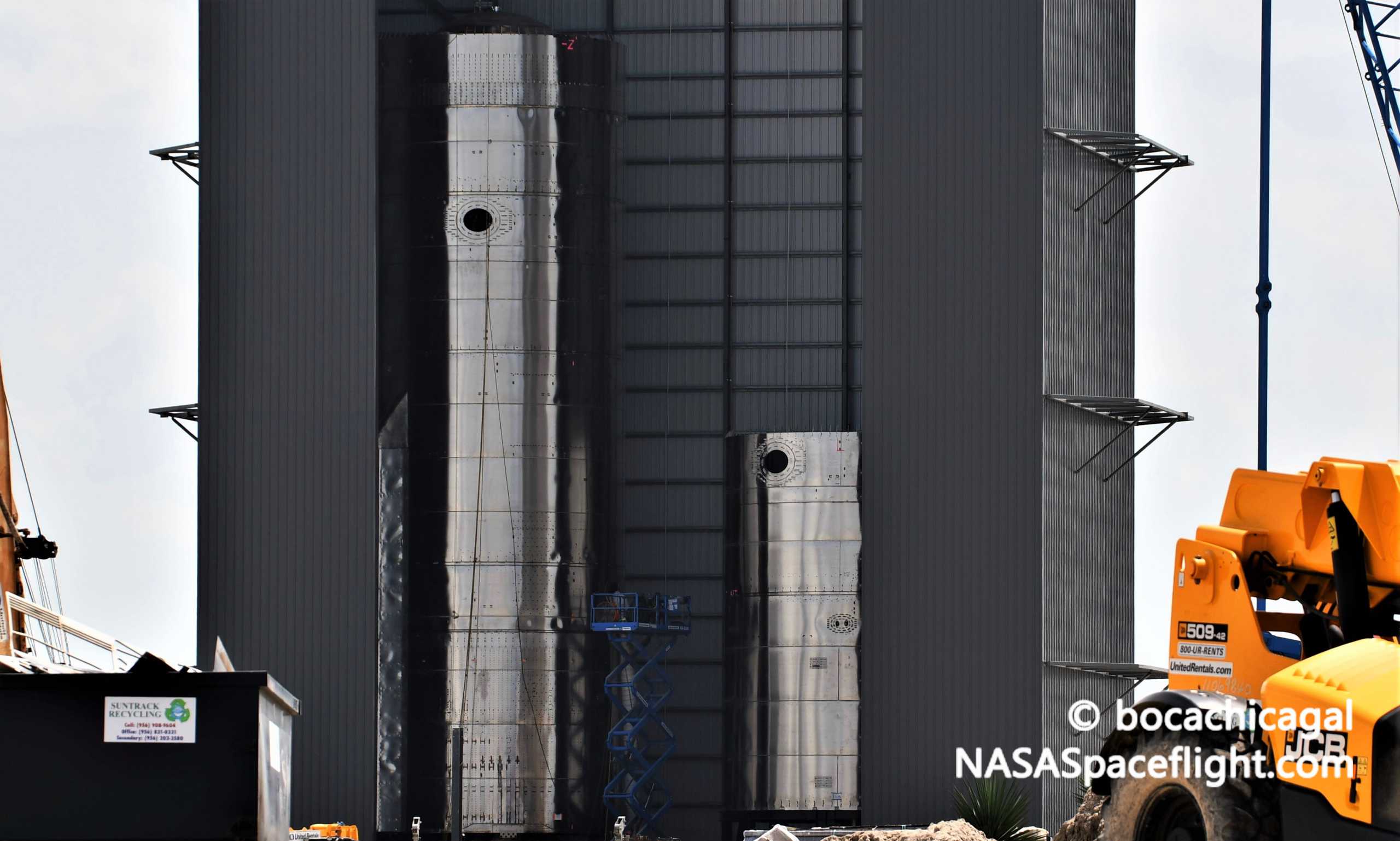
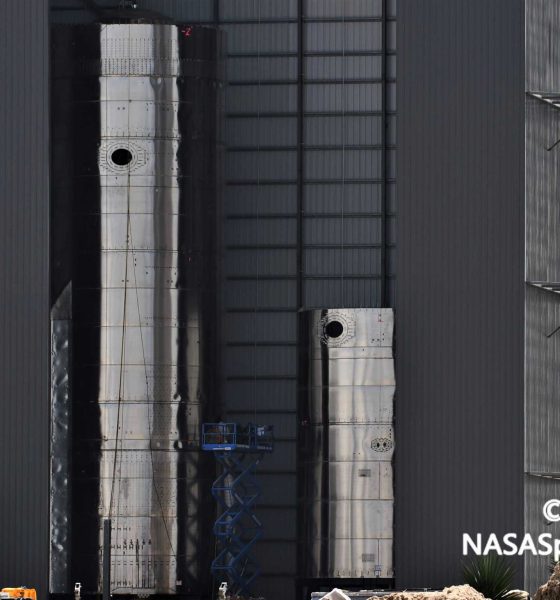
News
SpaceX’s first high-altitude Starship gets ready to prove itself
SpaceX has begun outfitting its first high-altitude Starship prototype with the basis of functional aerodynamic flaps, potentially paving the way for the ship’s first crucial proof test(s) in the near future.
Unsurprisingly, the first real attempt to install the functional ‘flaps’ Starships will use to fall back to Earth and land has been (relatively) slow going. The tank and engine section of Starship serial number 8 (SN8) – the high-altitude prototype-to-be – was stacked to its full height around August 27th. Shorthand for curved steel sections meant to make Starships more aerodynamic and protect sensitive mechanisms, the first signs of functional ‘aerocovers’ arrived in Boca Chica a few days later on August 31st.
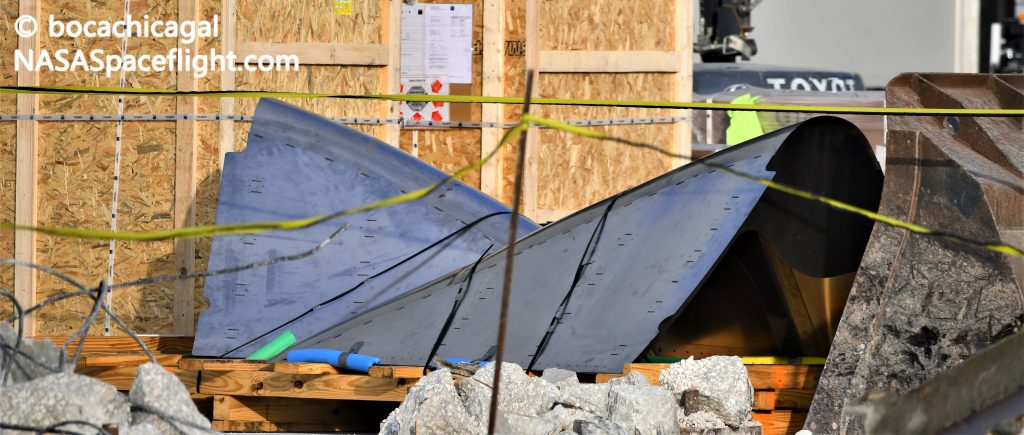
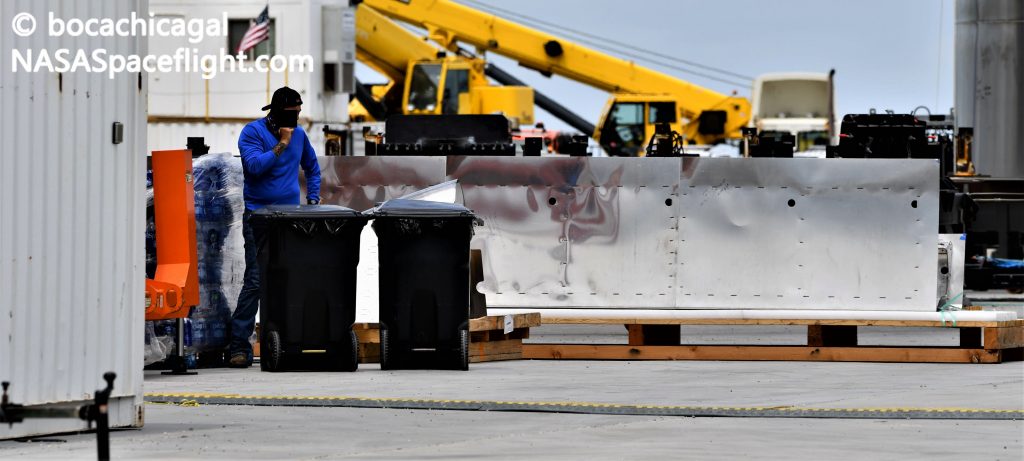
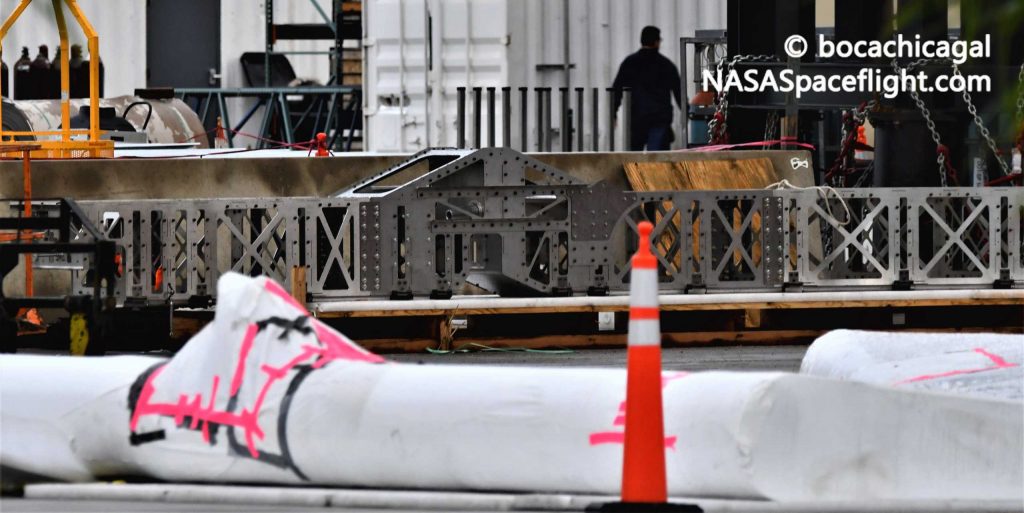
A much longer aerocover appeared on September 11th and SpaceX appeared to begin installing it on Starship SN8 around September 14th, temporarily tack-welding it to the rocket’s hull. SpaceX may be using a sort of alignment jig (bottom photo above) to ensure that the extremely thin and flexible steel covers are easily installed in a uniform fashion where they’re supposed to be.
If not, the LEGO-esque structure could also be a rudimentary frame for Starship’s aft flaps – heavy and inefficient but extremely cheap and easy to build and tweak. Most of that work is being done inside SpaceX’s Starship assembly building, largely hidden from sight from public perspectives, so it’s hard to say anything with certainty until SN8 rolls out for the first time.
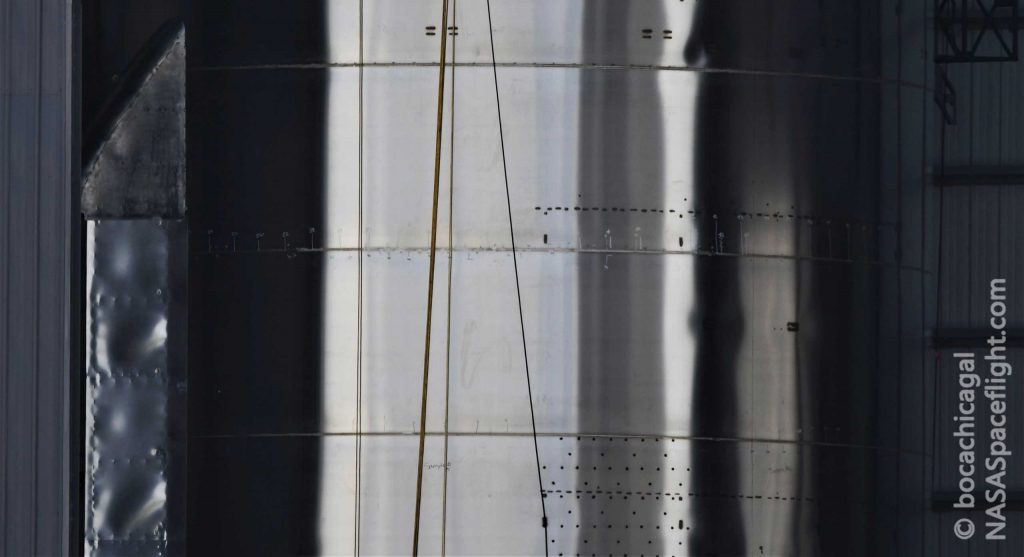
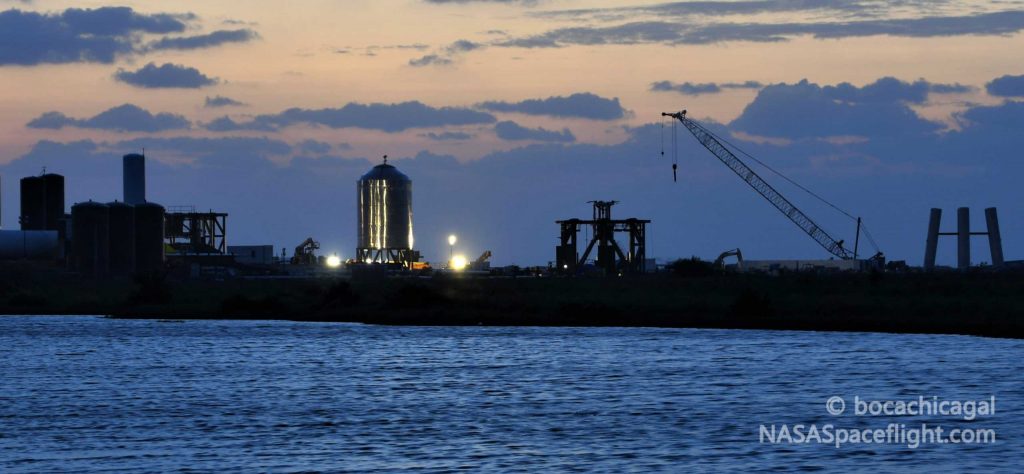
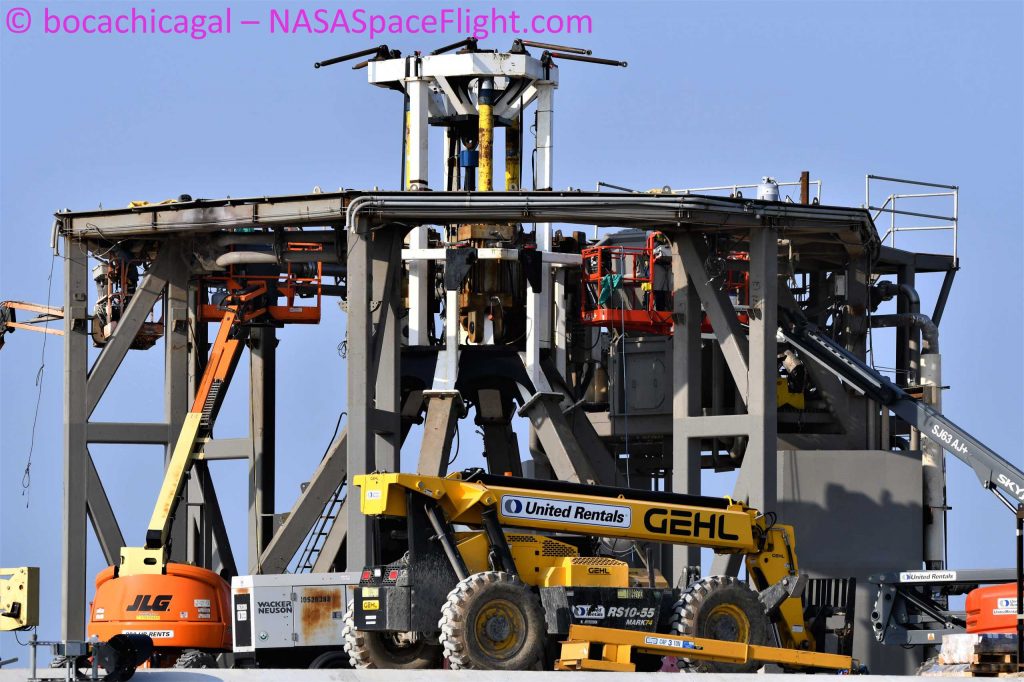
When that milestone will come is unclear, likely to the extent that even SpaceX isn’t sure. Currently, it’s unknown if SpaceX will fully outfit Starship SN8 with a nosecone and all four flaps before putting the prototype through its first proof tests – possibly up to and including the first static fire test with three Raptor engines. Starship SN8 is the first full-size prototype built out of a new steel alloy and while that alloy is currently being tested to its limits by test tank SN7.1, proving SN8’s integrity first would save a lot of time and effort in the event that SpaceX has more to learn about the limits of 304L steel and the ship fails during basic testing.
If SpaceX chooses to perform a cryogenic proof test prior to fully installing flaps and a nosecone, Starship SN8 could feasibly roll to the launch pad well before the end of the month. In fact, SpaceX moved a hydraulic ram used to simulate Raptor thrust back to the main test stand – where SN8 will likely undergo its first tests – on September 19th. Typically, that ram has been installed just days before a Starship is transported from factory to launch pad.
In the event that SpaceX chooses to perform a cryo proof test and/or static fire prior to fully integrating Starship SN8, the ship could likely be easily moved back to the factory to have its nosecone and flaps installed. Either way, chances are good that SN8 will be ready to head to the launch pad for its first test campaign within the next two weeks.
Check out Teslarati’s Marketplace! We offer Tesla accessories, including for the Tesla Cybertruck and Tesla Model 3.

News
Tesla FSD fleet is nearing 7 billion total miles, including 2.5 billion city miles
As can be seen on Tesla’s official FSD webpage, vehicles equipped with the system have now navigated over 6.99 billion miles.

Tesla’s Full Self-Driving (Supervised) fleet is closing in on almost 7 billion total miles driven, as per data posted by the company on its official FSD webpage.
These figures hint at the massive scale of data fueling Tesla’s rapid FSD improvements, which have been quite notable as of late.
FSD mileage milestones
As can be seen on Tesla’s official FSD webpage, vehicles equipped with the system have now navigated over 6.99 billion miles. Tesla owner and avid FSD tester Whole Mars Catalog also shared a screenshot indicating that from the nearly 7 billion miles traveled by the FSD fleet, more than 2.5 billion miles were driven inside cities.
City miles are particularly valuable for complex urban scenarios like unprotected turns, pedestrian interactions, and traffic lights. This is also the difference-maker for FSD, as only complex solutions, such as Waymo’s self-driving taxis, operate similarly on inner-city streets. And even then, incidents such as the San Francisco blackouts have proven challenging for sensor-rich vehicles like Waymos.
Tesla’s data edge
Tesla has a number of advantages in the autonomous vehicle sector, one of which is the size of its fleet and the number of vehicles training FSD on real-world roads. Tesla’s nearly 7 billion FSD miles then allow the company to roll out updates that make its vehicles behave like they are being driven by experienced drivers, even if they are operating on their own.
So notable are Tesla’s improvements to FSD that NVIDIA Director of Robotics Jim Fan, after experiencing FSD v14, noted that the system is the first AI that passes what he described as a “Physical Turing Test.”
“Despite knowing exactly how robot learning works, I still find it magical watching the steering wheel turn by itself. First it feels surreal, next it becomes routine. Then, like the smartphone, taking it away actively hurts. This is how humanity gets rewired and glued to god-like technologies,” Fan wrote in a post on X.
News
Tesla starts showing how FSD will change lives in Europe
Local officials tested the system on narrow country roads and were impressed by FSD’s smooth, human-like driving, with some calling the service a game-changer for everyday life in areas that are far from urban centers.

Tesla has launched Europe’s first public shuttle service using Full Self-Driving (Supervised) in the rural Eifelkreis Bitburg-Prüm region of Germany, demonstrating how the technology can restore independence and mobility for people who struggle with limited transport options.
Local officials tested the system on narrow country roads and were impressed by FSD’s smooth, human-like driving, with some calling the service a game-changer for everyday life in areas that are far from urban centers.
Officials see real impact on rural residents
Arzfeld Mayor Johannes Kuhl and District Administrator Andreas Kruppert personally tested the Tesla shuttle service. This allowed them to see just how well FSD navigated winding lanes and rural roads confidently. Kruppert said, “Autonomous driving sounds like science fiction to many, but we simply see here that it works totally well in rural regions too.” Kuhl, for his part, also noted that FSD “feels like a very experienced driver.”
The pilot complements the area’s “Citizen Bus” program, which provides on-demand rides for elderly residents who can no longer drive themselves. Tesla Europe shared a video of a demonstration of the service, highlighting how FSD gives people their freedom back, even in places where public transport is not as prevalent.
What the Ministry for Economic Affairs and Transport says
Rhineland-Palatinate’s Minister Daniela Schmitt supported the project, praising the collaboration that made this “first of its kind in Europe” possible. As per the ministry, the rural rollout for the service shows FSD’s potential beyond major cities, and it delivers tangible benefits like grocery runs, doctor visits, and social connections for isolated residents.
“Reliable and flexible mobility is especially vital in rural areas. With the launch of a shuttle service using self-driving vehicles (FSD supervised) by Tesla in the Eifelkreis Bitburg-Prüm, an innovative pilot project is now getting underway that complements local community bus services. It is the first project of its kind in Europe.
“The result is a real gain for rural mobility: greater accessibility, more flexibility and tangible benefits for everyday life. A strong signal for innovation, cooperation and future-oriented mobility beyond urban centers,” the ministry wrote in a LinkedIn post.
News
Tesla China quietly posts Robotaxi-related job listing
Tesla China is currently seeking a Low Voltage Electrical Engineer to work on circuit board design for the company’s autonomous vehicles.

Tesla has posted a new job listing in Shanghai explicitly tied to its Robotaxi program, fueling speculation that the company is preparing to launch its dedicated autonomous ride-hailing service in China.
As noted in the listing, Tesla China is currently seeking a Low Voltage Electrical Engineer to work on circuit board design for the company’s autonomous vehicles.
Robotaxi-specific role
The listing, which was shared on social media platform X by industry watcher @tslaming, suggested that Tesla China is looking to fill the role urgently. The job listing itself specifically mentions that the person hired for the role will be working on the Low Voltage Hardware team, which would design the circuit boards that would serve as the nervous system of the Robotaxi.
Key tasks for the role, as indicated in the job listing, include collaboration with PCB layout, firmware, mechanical, program management, and validation teams, among other responsibilities. The role is based in Shanghai.
China Robotaxi launch
China represents a massive potential market for robotaxis, with its dense urban centers and supportive policies in select cities. Tesla has limited permission to roll out FSD in the country, though despite this, its vehicles have been hailed as among the best in the market when it comes to autonomous features. So far, at least, it appears that China supports Tesla’s FSD and Robotaxi rollout.
This was hinted at in November, when Tesla brought the Cybercab to the 8th China International Import Expo (CIIE) in Shanghai, marking the first time that the autonomous two-seater was brought to the Asia-Pacific region. The vehicle, despite not having a release date in China, received a significant amount of interest among the event’s attendees.








